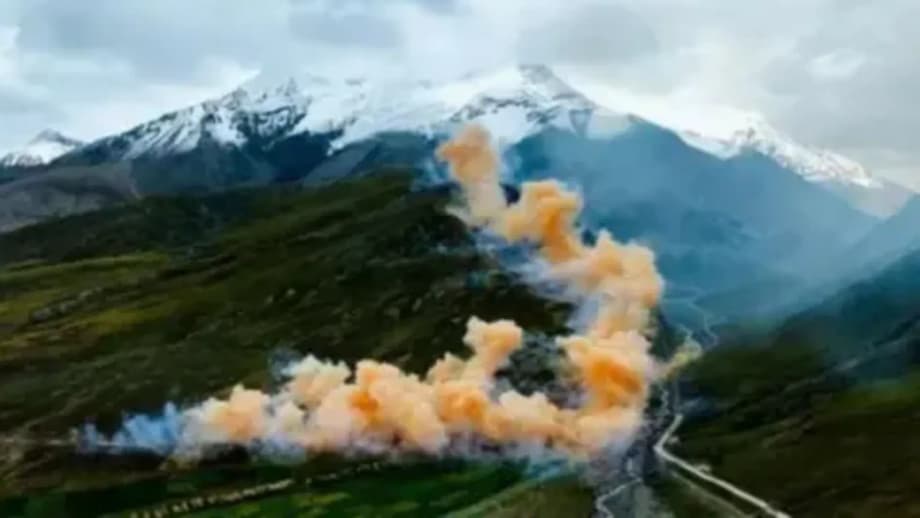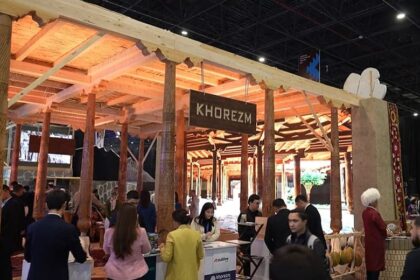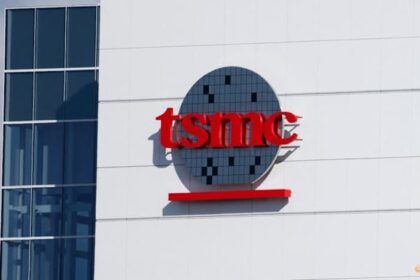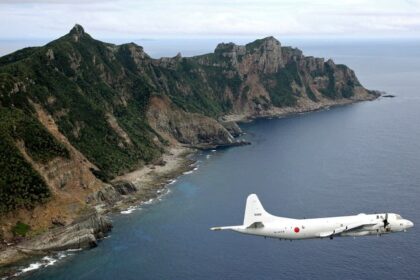A marketing spectacle in the Himalayas triggers sackings, fines and a public reckoning
Four local officials in Tibet have been dismissed and several others punished after a high altitude fireworks display sponsored by outdoor brand Arc’teryx and designed by renowned artist Cai Guo-Qiang ignited a storm over environmental protection and official oversight. The show, staged on September 19 in Gyantse County under Shigatse city (also known as Xigaze), sent a multi colored “rising dragon” of fireworks and smoke up a ridgeline at roughly 4,700 to 5,000 meters. The spectacle drew immediate backlash from nature lovers, Tibetans, and consumers, who said the stunt clashed with the brand’s conservation image and the plateau’s fragile ecology. Authorities concluded the blast caused limited damage in the short term, required continued monitoring for longer term risks, and warranted penalties for both the sponsors and the officials who approved it.
- A marketing spectacle in the Himalayas triggers sackings, fines and a public reckoning
- What happened on the mountain ridge
- Why the site is so sensitive
- Government investigation and penalties
- Arc’teryx and Cai apologize and promise repairs
- Online backlash and a consumer trust crisis
- Cultural sensitivities in Tibet
- What fireworks can do to alpine ecosystems
- Law, oversight, and a newer protection framework
- What Arc’teryx and Cai must do next
- Could this reshape brand behavior in sensitive regions
- What to Know
Shigatse officials said the ignition sequence lasted about a minute and disturbed roughly 30 hectares of alpine grassland. Investigators cited remnants of fireworks and plastic debris left on the slope and described short lived disruptions to wildlife from intense light and noise. The city ordered Arc’teryx and Cai’s studio to fund cleanup and restoration, and to compensate for ecological losses. The fallout extended far beyond the ridge, exposing gaps in local governance, testing corporate crisis management, and drawing rare public rebukes from industry bodies over marketing in a sensitive region.
What happened on the mountain ridge
The event, branded Rising Dragon by organizers, unfolded along a mountain slope near Relong Township in Gyantse County, within the Tibet autonomous region of China. Videos posted online show stripes of colored smoke and bursts tracing a path toward a snow capped crest, forming a dragon motif that has featured across Cai Guo-Qiang’s long career with gunpowder art. The location sits near the northern range of the Himalayas at very high elevation, where air is thin, vegetation is sparse, and recovery from disturbance can be slow.
Local authorities say the fireworks affected about 30.06 hectares of alpine turf. An investigative summary by Shigatse city described the incident as a human disturbance in an ecologically sensitive area, with limited short term pollution and damage but unresolved longer term risks. The report criticized the incomplete cleanup of debris, including fragments of casings and plastics. It also highlighted inadequate supervision and poor decision making among county level departments that reviewed and green lit the project.
The display and its artistic intent
Cai Guo-Qiang, one of China’s most famous contemporary artists and the creator of the 2008 Beijing Olympics fireworks, conceived Rising Dragon as a dialogue with the mountains. He has long experimented with gunpowder and pigment to sketch forms in the sky and across landscapes. His studio and Arc’teryx said the team used biodegradable materials and took precautions, such as moving livestock, guiding wildlife away with salt blocks, and organizing post show cleanup. Organizers also argued the project followed test standards used around the 2022 Beijing Winter Olympics.
Those assurances failed to calm critics who said biodegradable does not mean zero impact. Commenters questioned how the show had sailed through approvals in a region where the environment is fragile and mountains hold spiritual meaning for many local people. The shock to wildlife, the residue left on slopes, and the optics of a marketing spectacle in a sacred landscape fueled a wave of boycott calls and angry posts across Chinese and global social media.
Why the site is so sensitive
The Tibetan Plateau is often called the Third Pole for its vast stores of ice and its central role in Asia’s climate and water cycles. High elevation grasslands and alpine meadows develop slowly. Plants grow in thin soils, and recovery from trampling, scraping, or chemical shock can take years. Loud noise and bright flashes can scatter birds and mammals during feeding or breeding, and residues from fireworks can introduce metals, oxidizers, and microplastics that linger in soil and streams until broken down or removed.
Even when manufacturers design fireworks with biodegradable elements, many components still require physical cleanup. Cardboard and some films can biodegrade under the right conditions, but colored flames come from metal salts and other compounds that do not vanish quickly. On steep slopes, fragments and unburned pieces can be hard to collect, and wind can spread remnants across larger areas. The plateau’s sparse vegetation leaves less buffer to absorb disturbance.
Government investigation and penalties
Shigatse city announced disciplinary action after its probe. Four officials were dismissed, including the Communist Party secretary of Gyantse County, the county public security chief, and senior staff from county and city environmental agencies. Others received warnings and administrative penalties. Authorities said the show violated rules tied to protection of the Qinghai Tibet Plateau and local grasslands, citing improper approval, lax supervision, and failure to prevent debris and other impacts.
Officials ordered Arc’teryx and Cai’s studio to fund remediation and to support restoration of the affected grassland. They said monitoring will continue to watch for delayed effects on soil, vegetation, and wildlife. City leaders described the event as a human disturbance that produced limited short term damage, while stressing that longer term ecological risks cannot be dismissed until data confirms full recovery.
The Shigatse municipal government summarized the environmental conclusion in plain terms. Investigators said the blast was short, the affected area was measurable, and visible damage was limited, yet they underscored the need for caution and ongoing checks in a fragile setting. The city emphasized accountability up and down the chain, from the sponsor and artist to the departments that gave the green light.
In its public notice, the city characterized the ecological finding as a warning and a lesson for event approval in sensitive landscapes. It said the final penalties for the private parties would reflect the full costs of cleanup and restoration.
Before the formal notice, authorities had summarized their findings for the public. They described the event as a human disturbance in an ecologically sensitive area that created debris and caused a short period of wildlife disturbance.
Shigatse city officials said the fireworks show constituted a human disturbance in a sensitive area, with limited short term damage but long term risks requiring continued monitoring.
Arc’teryx and Cai apologize and promise repairs
Arc’teryx posted apologies across its global and China channels, saying the display conflicted with the brand’s commitment to nature. The company said it would commission an independent ecological assessment, work with local authorities on restoration, and fund any required cleanup. The brand also acknowledged public criticism and pledged to review its internal process for approving art and marketing projects in natural settings.
In one of its statements, the company addressed the need for humility and better judgment in art projects tied to landscapes. Company leaders said they had heard the public’s concerns and would adjust practices to match stated values.
Arc’teryx is part of Amer Sports, which relisted in New York in 2024, and is controlled by a consortium led by Hong Kong listed Anta Sports. The brand has grown quickly in China and the rest of Asia in recent years, with an image built on technical gear for climbing, skiing, and mountaineering. The Tibet show was intended to highlight mountain culture. It instead strained trust among core outdoor enthusiasts who expect a rigorous approach to environmental stewardship.
Cai Guo-Qiang also issued a personal apology. The artist said he would cooperate with authorities and help fund cleanup and restoration work as needed.
He acknowledged mistakes in planning and execution. He said the team would assist in any recovery tasks and reassess how to engage with nature through art without causing harm.
Arc’teryx said: “The public’s criticism has alerted us that the evaluation of the expression of art needs to be more professional and we need to be more humble and respectful of nature.”
The artist addressed his role plainly and acknowledged that planning fell short.
Cai Guo-Qiang said: “There were many oversights on our part,” adding that he would work with local authorities to help in the area’s recovery.
Online backlash and a consumer trust crisis
The digital reaction was immediate and intense. Shoppers posted pictures of Arc’teryx jackets alongside clips of colored blasts on the ridge, accusing the brand of talking conservation while damaging a fragile mountain slope. Calls for a boycott spread across Chinese platforms and into global communities of climbers and hikers. Many asked how a project of this scale was approved in such a sensitive place.
China’s top advertising industry group spoke up as well. The China Advertising Association issued a public statement criticizing the campaign for dressing a commercial promotion in the language of nature respect, then risking environmental harm. It urged brands to choose marketing strategies that do not put ecologies at risk and to rebuild public confidence through concrete action.
In that statement, the industry body warned that years of goodwill can be undone by a single misjudged spectacle. It focused on the gap between a brand story built on care for wild places and the choice to set off fireworks on an alpine ridge where grass grows slowly and animals are sensitive to noise and light.
The China Advertising Association said it was “disappointed” in Arc’teryx for not having “explored more positive marketing strategies” and warned the display “potentially harmed the environment, ultimately eroding years of trust.”
Investors took notice. Amer Sports shares lost momentum as the incident drew regulatory scrutiny and ongoing debate. Analysts pointed to the risk that core customers, including mountaineers and ski communities, might shift purchases to rivals if trust erodes. The controversy highlighted the costs of inconsistency, with consumers and staff confused by differences between statements issued by overseas and China teams. Crisis managers say consistent language and full ownership of mistakes are vital when actions clash with brand identity.
Cultural sensitivities in Tibet
Tibet is both a fragile ecosystem and a place of deep spiritual meaning. Many Tibetans see high mountains as sacred, with taboos against loud blasts near revered peaks. The event site sits in a region where local religion and culture are entwined with the landscape. That cultural layer combined with ecological risk to make the show far more than just a marketing decision.
The region is also tightly managed by central and regional authorities, with strict rules for gatherings and commercial events. Tourism from elsewhere in China has surged, bringing development and income as well as new pressures on roads, water, and grasslands. Incidents that appear to prioritize spectacle over preservation often spark national conversation around respect for culture and limits on commercial promotion in sensitive areas.
What fireworks can do to alpine ecosystems
Fireworks are complex chemical packages. To produce distinct colors, they use compounds such as strontium and barium salts, and fuels and oxidizers that enable rapid combustion. Tracers and casings can leave residues. In urban festivals, cleanup crews collect debris on streets and in parks. On steep mountain slopes, much of that work is harder, and fragments can scatter out of reach. Even if paper and starch based elements biodegrade, some components persist in soil and can wash into streams during melt or rain.
Bright light and sound pressure can startle birds and mammals and disrupt short periods of feeding or rest. The official Shigatse report called the disturbance short, yet wildlife in thin alpine zones often have limited calorie reserves and can be sensitive to repeated stress. The line between acceptable artistic expression in nature and avoidable interference can be thin in high elevation areas, which is why many parks and protected areas limit fireworks and require strict reviews for any land use change.
Law, oversight, and a newer protection framework
China has strengthened legal protections for the Qinghai Tibet Plateau, reflecting national concern about glacier retreat, water sources, and fragile high country ecosystems. Local grassland rules further restrict damaging activities and impose liability for restoration. Shigatse officials cited that framework in their investigation, saying the event violated plateau protection and grasslands regulations and would face penalties. The case shows how fast moving promotions can run headlong into a stricter conservation regime.
Event approvals go through multiple desks. In this case, the investigation found poor judgment and weak supervision. The sackings signal that regional leaders intend to deter similar projects in sensitive areas. They also indicate that cultural and ecological sensitivity now carry real weight in performance reviews for local cadres who approve commercial events.
What Arc’teryx and Cai must do next
Beyond apologies, the sponsors are now on the hook for cleanup, restoration, and independent impact assessment. That includes a full sweep of debris, soil and vegetation surveys through at least one growing season, and monitoring for any changes in wildlife activity. Restoration work in alpine grasslands often involves reseeding with native grasses, temporary fencing to keep livestock off recovering patches, and periodic checks for invasive plants that can take root in disturbed soil.
Brands that position themselves as stewards of the outdoors face higher expectations. That is not just a moral issue. Outdoor consumers tend to be engaged, informed, and vocal. When actions do not match mission statements, the trust gap can be costly. Many marketing teams now avoid pyrotechnics on trails, ridges, and sensitive coastlines and opt for drone light shows or other lower impact art forms that minimize noise, debris, and fire risk. The Tibet case will likely accelerate that shift.
Could this reshape brand behavior in sensitive regions
Public reaction has already changed the calculus for campaigns in high elevations and sacred landscapes. Industry groups in China and elsewhere promote stronger review processes, clearer thresholds for ecological risk, and independent assessments before permits are issued. The Tibet incident puts a bright spotlight on how brands navigate culture and ecology when operating in places where values are deeply rooted and ecosystems are thin and easily disturbed.
For local governments, the episode underscores the need to align event approvals with newer plateau protection rules and to require realistic cleanup plans before any launch. For brands and artists, it raises the bar for due diligence and community engagement, especially where traditional beliefs are closely tied to land and mountains. Swift apologies can help, yet lasting repair requires transparency, consistent messaging, and visible restoration work on the ground.
What to Know
- Four officials in Tibet were dismissed and others punished after a short fireworks display sponsored by Arc’teryx and designed by Cai Guo-Qiang on a Himalayan ridge.
- Shigatse city said the show disturbed about 30 hectares of grassland and created debris, with limited short term damage but longer term risks requiring monitoring.
- Authorities ordered Arc’teryx and Cai’s studio to fund cleanup, restoration, and independent ecological assessments.
- Arc’teryx apologized, calling the event out of line with its values, and pledged to review its approval process for art and marketing in natural settings.
- The China Advertising Association criticized the campaign and warned it eroded public trust.
- The case highlights tougher protection rules for the Qinghai Tibet Plateau and stricter accountability for local officials.
- Consumer backlash grew, with boycott calls and concerns that trust among core outdoor users has been damaged.
- Investigators cited debris and wildlife disturbance, and the site will be monitored to confirm full recovery over time.












